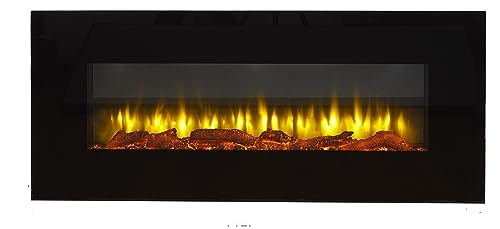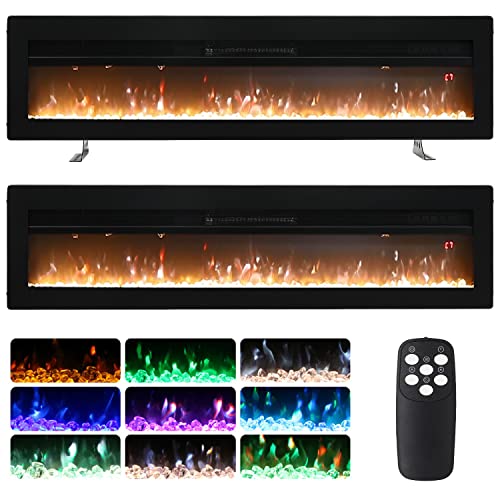Guide To Small Wood Burning Stove: The Intermediate Guide Towards Smal…
페이지 정보

본문
 Installing the Very Small large wood burner Burning Stove
Installing the Very Small large wood burner Burning Stove Wood stoves are becoming increasingly installed in smaller, more well-insulated homes. The most compact wood-burning stoves are perfect for these spaces. They offer significant health benefits.
Wood stoves are becoming increasingly installed in smaller, more well-insulated homes. The most compact wood-burning stoves are perfect for these spaces. They offer significant health benefits.They are also ideal for yurts. They can be used in caravans, shepherd huts and sheds. It is crucial to remember to ensure that you have a safe space between the stove and any combustible materials.
How to set up a small wood stove?
wood burners for sale-burning stoves can be a fantastic way of heating a small woodburners house without racking up your energy costs or using petroleum. However, installing a wood stove isn't easy. There are numerous steps to follow to ensure that the stove is properly installed and safely. Make sure you have all the tools needed and follow the guidelines of the manufacturer prior to you begin. It is also recommended to seek out a professional certified to assist you.
The first step is to prepare the space in which the stove will be installed. This includes removing combustible materials and making the foundation for the hearth. Then, you can construct an hearth and put in the stove. A hearth is an inflammable, fire-resistant layer that shields your floor underneath the stove. It also serves as a solid base for the tubes of metal that carry smoke and odors away from the home.
You can either use a hearth pad already made or make your own. The pad should be constructed from concrete or fire-resistant tiles. The pad should be secured to the floor using high-temperature concrete, which can be purchased from home improvement stores. Make sure the hearth is aligned with the stove and meets the side clearance requirements.
Next, you will need to choose which kind of chimney pipe to use. Choose between black single-wall or double-wall stove pipe (opens in a new tab). The choice will be determined by the distance required between your stove and the combustible surfaces. The recommended distance should be based on the guidelines of the manufacturer as well as local building codes.
If you're unable to locate your stove within the recommended distances, you can install heat shields to decrease the clearance required. You should check with your local fire department and insurance company to determine if this is permitted.
Another option is to install a fan that blows the hot air out of the room. This can help the stove to heat the space more evenly. Then, you can move your furniture closer to the fire and relax in a cozy fireplace. Just remember that you should only burn dried, seasoned wood in your stove. The ash produced by burning wood could cause harm to your family if you don't.
Space requirements
Wood stoves are a common choice for many people, but they need to be understood in terms of how much space they require. The amount of space needed around your wood stove will be contingent on the dimensions of your space and the heat output. If you don't have enough space to install a stove, you might think about other sources of heating.
The dimensions of a small wood burning stove will vary based on the manufacturer, but generally speaking, you must leave at least two feet (60 cm) between the stove and combustible material. You should also think about walls and ceilings that are combustible. It is also advisable to consult your insurance company to see what requirements they have for the stove.
To reduce the amount of space required for a small wood stove, you can utilize venting systems that have an flue pipe that is insulated. This will decrease the amount of space you need to leave around the stove, small wood Burning stove and it will also prevent smoke from entering the room. Be sure to read the guidelines of the manufacturer before selecting a venting solution for your small wood burning stove.
A heat shield can be used to decrease the distance between your wood burner stove and combustible substances. These shields can be purchased from the manufacturer and fitted to either the side or the back of the wood stove. Additionally, you can also use double wall flue pipes to cut down on the space you need to leave between your stove and combustible materials.
A good option for a small wood stove is to use an iron fireback. It can be found at the hardware store near you. It's an excellent method to protect your walls from damage caused by fire. A fireback also helps to prevent hot embers falling on your flooring or furniture and will remove the need for chimney caps.
A small wood-burning stove can be an ideal choice for apartments and homes that have limited space. This type of stove is simple to use and provides efficient heating for a much lower price than other alternatives. In addition, wood is a renewable resource that is easy to find locally.
Flue system
Flue systems act as a conduit, moving gasses and smoke away from the stove to outside your home. These gases could build-up in the room without a flue, and could pose a serious health risk. They could also trigger an unsafe draft.
Select a flue system that is compatible with the dimensions and power output of your stove. The ideal flue pipe will be at least 25 percent bigger than the stove itself to ensure that it is able to accommodate proper draft development and smoke passage. It is also crucial that the flue system is properly insulated. A well-insulated flue pipe will reduce heat loss and keep the temperature within the stove at a minimum which will increase the efficiency.
It is also important to think about where your tiny wood stove will be when selecting the flue. If your stove will be situated in a mobile house or caravan, you must choose a flue system that is able to be easily removed when the unit is moved. If you are planning to use your stove in a permanent residence it is recommended to choose an internal system. In this case the flue pipe will be run through the wall and ceiling of your home. You could also install an external twin wall flue system. These systems are simple to install and require minimal disruption to the interior of your home.
Although you might be tempted to build your tiny wood stove with a chimney that has been pre-fabricated however, it is not recommended. This option can be costly and risky if not done correctly. A better option is to install a flexi flue liner. They are available in a variety of sizes and grades and can be cut to the size of your stove. The grade of the flue liner you select for your stove will determine how well the smoke and gases are carried through the chimney.
When installing an air-tight flue system, it is vital to follow the appropriate UK building regulations. These regulations outline the requirements for distance from combustibles and fire hazards, how the flue system is routed and the size of the hearth. In addition it is essential to install carbon monoxide detectors in the room in which the stove will be installed. This device will alert you if it detects hazardous levels of this odourless and poisonous gas.
Safety precautions
Wood stoves can be a popular way to heat your home however, if they're not properly installed or used they could ignite and cause fires. Wood stoves that aren't properly installed and operated in accordance with the manufacturer's instructions cause over 4000 fires in homes every year. These fires can be prevented by following some simple safety precautions. These measures include proper venting, avoiding burning garbage and other materials in the stove, as well as keeping children and pets far away from the fireplace or wood stove.
A wood stove should be vented via a steel chimney that is at least of 1 meter above roof level. It shouldn't be connected to a flue that is used by other appliances, like boiler or furnace which could cause toxic carbon monoxide fumes to escape into the home. The chimney should also be inspected regularly to avoid creosote and other dangerous conditions.
The stove should be placed at least three metres away from furniture and walls to prevent accumulation of heat and smoke. In addition, the stove should be kept on a noncombustible base. A professional mason should examine the chimney and wood stove on a regular basis to ensure that the chimney is free of obstructions.
It is important to make sure you use only dry, seasoned wood in the wood stove. Wet or greenwood takes longer to burn and creates more smoke. Furthermore, it could cause the room to be filled with toxic chemicals and trigger smoke inhalation.
It is important to only add just a few pieces at one time of dry, seasoned dry wood whenever you start the fire. Placing too much wood in the stove could result in overheating and cause an explosion in the chimney. Paper and trash shouldn't be burned in wood stoves as they emit toxic fumes.
It is a good idea to test the wood stove's operation before each winter. Burn three or two small pieces well-seasoned wood for a few moments. This will reveal any creosote or other blockages that may have built up in the chimney.
- 이전글11 "Faux Pas" That Actually Are Okay To Make With Your Address Collection Site 25.02.04
- 다음글10 Tips To Know About Link Collection 25.02.04
댓글목록
등록된 댓글이 없습니다.